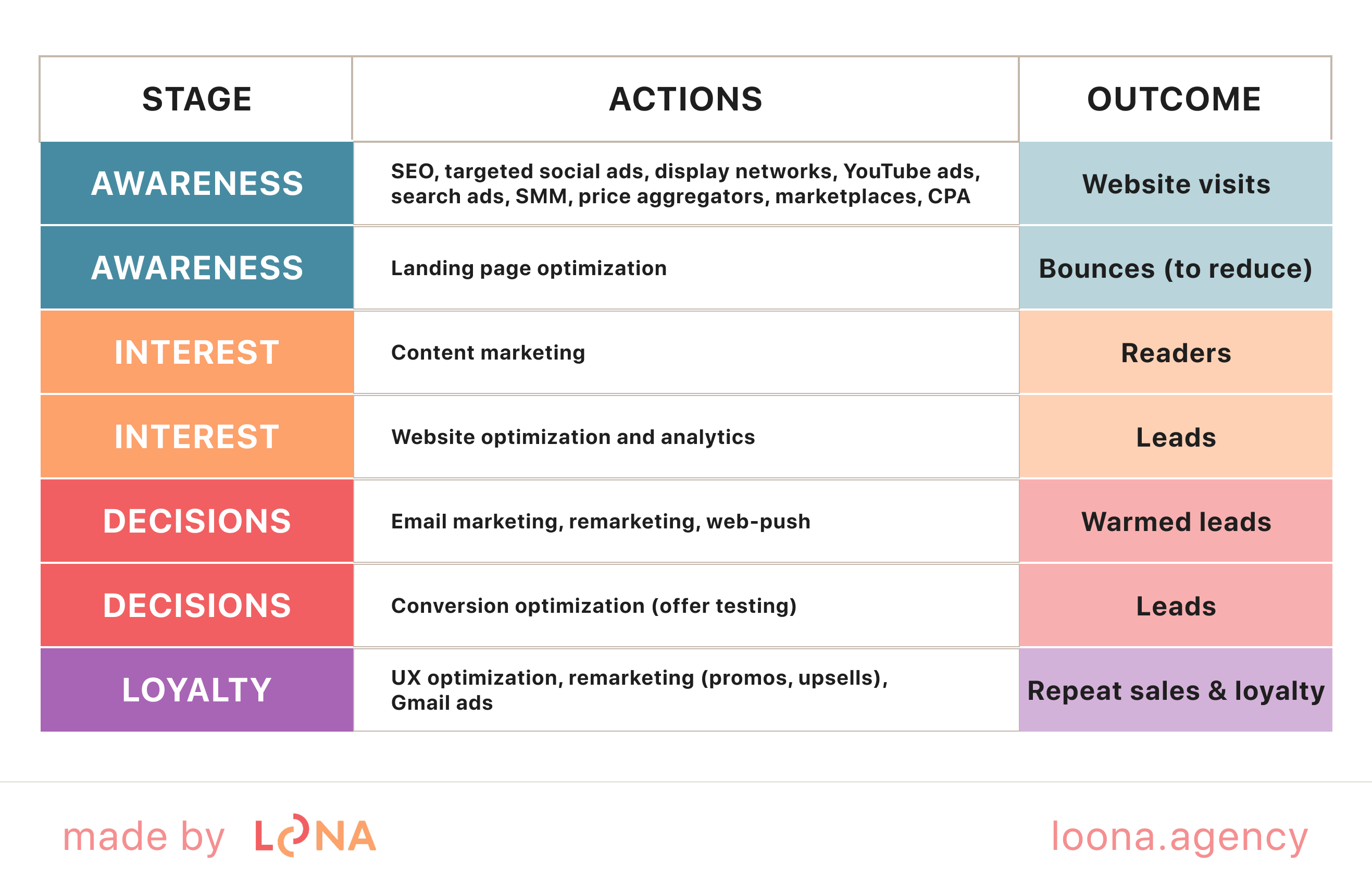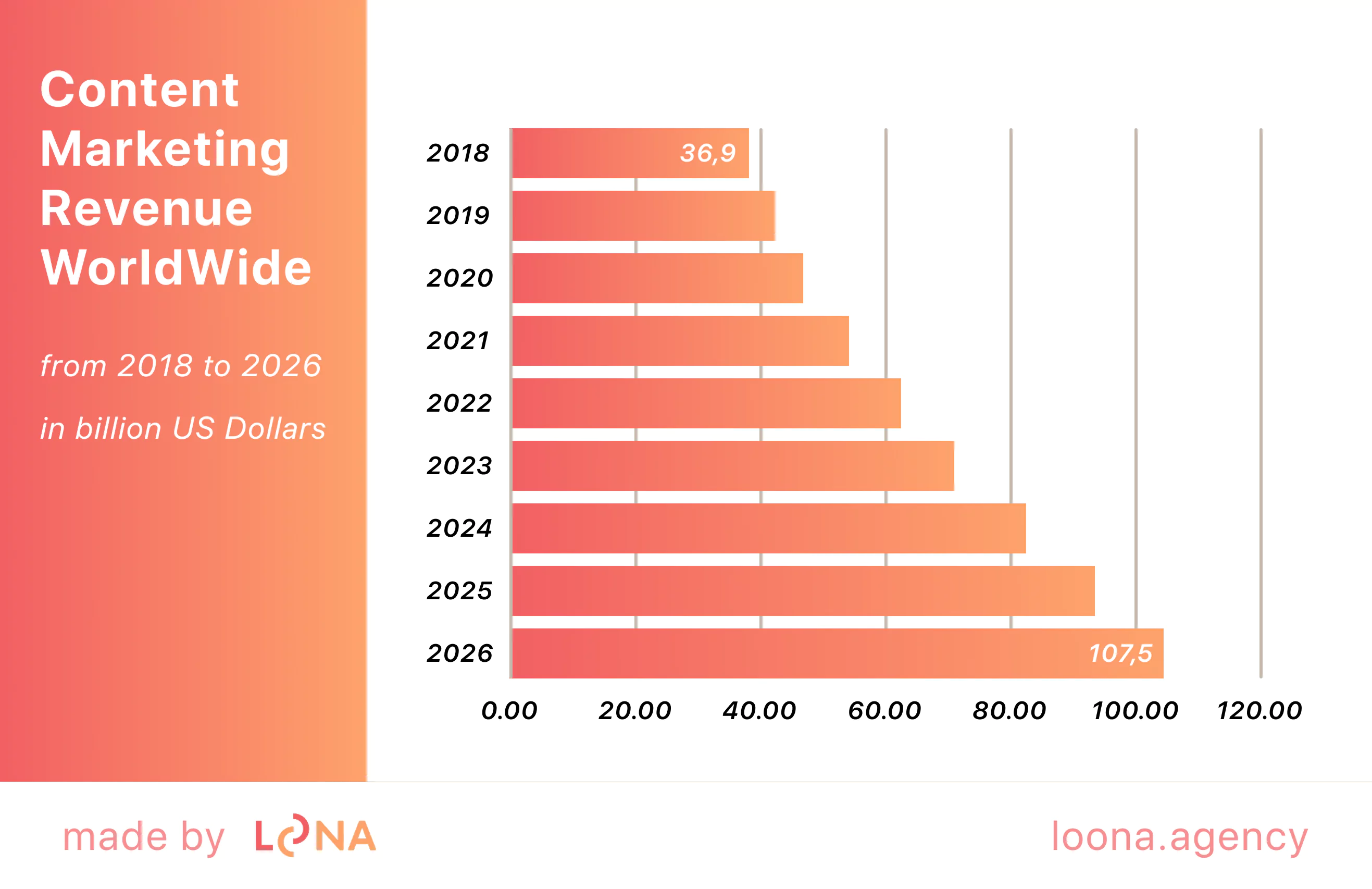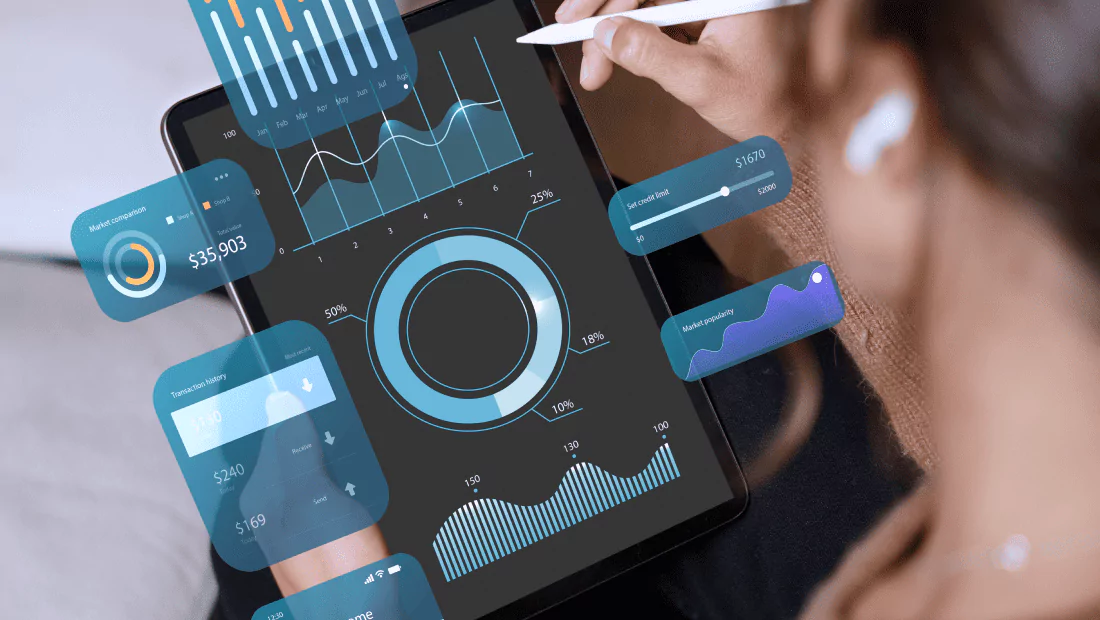Digital Marketing for Landscape Designers: Proven Strategies to Boost Business and Attract Clients

Want your next five projects to come in this month? Start where homeowners actually look. Clients search for landscaping contractors on Google, maps, and social media. Without a clear online strategy, leads go to competitors. Digital marketing for landscapers combines local SEO, content, and advertising with transparent metrics to consistently bring inquiries in your area.
The result is a predictable flow of requests, lower cost per lead, and faster sales of seasonal services — from spring maintenance to irrigation installation. This article explains how landscaping marketing and landscape design are connected, how to create a high-converting website, and how to verify that everything is working properly. Read to the end for a quick checklist you can copy today!
Why digital marketing fills the schedule for landscaping contractors
Homeowners compare in seconds: who appears nearby, whose work looks trustworthy, and how fast they can book. A simple, repeatable plan turns that behavior into booked jobs. Well-planned landscaping and digital marketing solve three tasks:
Local search visibility: Google Business Profile, city/area pages, consistent NAP (name, address, phone).
Trust through portfolio: before/after galleries, recent reviews, short case notes.
Quick booking: click-to-call, “send yard photos” form, online calendar with open slots.
After launching this stack, track two numbers weekly: cost per lead and booking rate. With steady execution, landscaping digital marketing keeps CPL (cost per lead) predictable, fills open slots in your calendar, and turns photo updates plus fast replies into signed work.

A website should answer the question “how much does it cost and when can you come,” not just display photos. For marketing for landscapers, effective tools include an online calculator, a “call back” form, and a “send site photos” button via WhatsApp/Telegram.
Next comes tracking: every call and request should have UTM (Urchin Tracking Module) tags to calculate cost per lead (contact information from a potential client). Reviews with before/after photos should appear in visible locations (Google Business Profile, service pages). This shortens the path from click to order and eliminates the “Are you real contractors?” question.
How clients choose a contractor online: demand, intent, competition
Search in this niche is primarily local and seasonal. People search for “lawn installation near me,” “tree trimming price,” and “flowerbed design with site visit.” To align channels, define digital strategies for landscapers for three intents: informational, commercial, and “ready to buy.” For digital marketing in the landscaping business, a simple matrix works:
Intent | Example queries | What to show |
Informational | “How often to water lawn,” “shrubs for shade” | Article + photos, FAQ, internal links to services |
Comparison | “yard drainage price,” “decking vs tiles” | Calculator, price ranges, case studies with area and timeframes |
Purchase | “yard landscaping Kyiv urgent” | “Estimate today” button, visit scheduling calendar, phone number in header |
Add coverage maps and “micro-landing pages” for each area. Synchronize working hours, team, and equipment photos across all directories; any discrepancy lowers conversion from maps. Regularly analyze competitors’ SERP (search engine results page): who collects reviews, how prices are displayed, and which pages win in the local block.
Strategies that generate leads for landscaping contractors
To make landscaping digital marketing work without gaps, start with the basics: website, local SEO (search engine optimization), content aligned with client intent, and simple advertising with clear tracking. The focus is on conversion, response speed, and proof of experience (portfolio, reviews).
This approach is practical marketing for landscapers without unnecessary tools: every element should lead to a call, form submission, or booking. Add a clear structure for service and area pages, up-to-date before/after photos, visible CTAs (call to action), and an online calendar for quick scheduling.
The Google Business Profile matches the data on the website, with photo reviews pulled into visible blocks. Advertising leads to relevant landing pages with price ranges, while UTM and call tracking enable the measurement of CPL, conversion, and visit booking share weekly.
Goal: respond to calls or DMs (direct messages) within 5 minutes and keep the offer consistent across all channels.
Build a high-converting website
Your website should explain what you do, where you work, and how to request a visit within 5-7 seconds. For digital marketing for landscapers, three core elements are main: page structure, proof of quality, and visible contact points.
Minimum architecture:
homepage with a short USP (unique selling proposition) and a “Get a quote today” button.
service pages (lawn, drainage, retaining walls, irrigation) with price ranges.
“projects” with before/after photos and square footage/timelines.
city/area pages with coverage map and service hours.
contacts: phone in the header, form, messengers, and booking calendar.
This structure sets clear navigation for both users and search engines and creates entry points for different intents. Next is what to place on typical pages to increase conversion.
Page | Goal | What to add |
Drainage service | Lead | “Photo of the site + address” form, FAQ, price range |
Portfolio | Trust | 6–12 case studies with area, timeline, and client review |
City/area | Local visibility | Map, hours, “Visit tomorrow” CTA, clickable phone |
This layout matches expectations: the client instantly sees the price, examples, and an easy contact method. If you have multiple service areas (irrigation, paving, trimming), repeat the service page template for each to capture demand separately.
To make the website work fast and display correctly on mobile devices, prepare the technical foundation and minimize extra clicks before a request.
Technical requirements:
fast loading of the mobile version, compression of before/after images.
schema markup: LocalBusiness, Service, Review, FAQ.
visible CTAs on every screen: phone, “Request a quote,” “Send photo.”
online calculator (area, surface type) — a lead magnet that collects contacts.
automated trigger emails/SMS after form submission: thank-you, photo request, visit slot.
Show live slots in the calendar and specific time windows for the team’s arrival. This reduces follow-up calls and speeds up bookings. Together, these elements create a framework that consistently converts visitors into leads.
Local SEO to dominate your area
Start with your Google Business Profile: fill in categories, services with price ranges, service hours, service areas, before/after photos, and a “Request a quote” button. Add Apple Business Connect and Bing Places — this expands your presence on maps and in prominent search result blocks.
Action list for local visibility:
consistent NAP data on your site and in all directories.
city/area pages with unique descriptions, project examples, and local reviews.
LocalBusiness/Service/Review schema markup, FAQ schema on service pages.
reviews with photos and company replies, Q&A in the profile.
call tracking: unique numbers for maps and the site with UTM tags.
After implementation, update internal links so service pages link to the corresponding city/area pages and vice versa. This shortens the path to a request and strengthens digital strategies landscapers, as search engines better know where you accept orders. Check your “Local Pack” visibility for priority queries once a month and update your portfolio with fresh case studies.
Content marketing that attracts clients
Content should match the client’s intent and guide them toward a cost estimate. The most effective are project pages with specifics: area, materials, timelines, budget range, and a testimonial. Add seasonal topics — spring lawn care, irrigation system startup, fall pruning — and link them to related services.
Lead-generating formats:
before/after case studies with a project map and brief technical description.
cost calculator: area × material × desired completion time.
solution comparisons (e.g., pavers vs composite decking) with a 3-year cost table.
local guides: “What clients in [city/area] request in spring” with links to service pages.
After each publication, add a CTA like “Send a photo of your yard” and a quick request form with an address field. Repurpose materials into short videos and carousel posts for social media.
Use UTM tags and track leads in CRM (customer relationship management). This approach delivers practical landscaping marketing strategies without unnecessary costs: each page acts as a lead entry point.
Paid Advertising for Quick Wins
Paid advertising brings in leads as early as this week if services and areas segment campaigns. Within digital marketing for landscapers, this means separate ad groups for “drainage,” “paving,” “irrigation,” and clear landing pages with a “get an estimate today” form.
Include everything in a simple landscaping marketing plan: seasonal budget, CPA (cost per action) goals, and a promotion calendar.
Google Ads: separate campaigns per service, exact and phrase match, negative keywords (“free,” “DIY”), call schedule;
Performance Max + locations: support with city/area pages and before/after photos;
Meta Ads: retarget website visitors, “visit tomorrow” offers, lead form;
Such a structure for marketing for landscapers reduces costs from irrelevant clicks and increases the share of calls from the first view.
Channel | Goal | Creative |
Google Search | On-site visit booking | “price range” text, call extension |
PMax | Leads from various platforms | Case photos, area-specific landing page |
Meta | Lead warming | Before/after carousels, short 10-15 sec video |
After launch, connect call tracking, UTM tags, and goals in analytics. Check search terms weekly, cut off “broad” queries, and reallocate the budget to campaigns with better CPA.
Social media to build trust and engagement
Social networks sell through trust: showcase your team, process, and results. 90% of marketers are using social media to share their content.
For landscaping digital marketing, short 10-30 second videos, "before/after" carousels, and stories with answers to typical questions work well. Add an auto-responder in Direct: "Send a photo of the site and address — we'll evaluate it today." This creates a simple funnel from a post to an application. What to post every week:
1 "before/after" case study with area and timing.
1 useful mini-guide (watering, pruning, lawn seeding).
1 call to action "estimate today" with a form and geotag of the area.
After creating this content plan, set publication time slots (2-3 stable windows per week) and pin the most effective posts. Add UTM to each link and a "Send a photo of the site" form in your bio. Respond to DMs within 5 minutes — this dramatically increases the number of requests from social networks.
Format | Goal | KPI |
Reels/Shorts | First touch | Views, saves |
Carousel | Trust and details | Clicks to the website |
Stories | Inquiries here and now | Replies/DM, link clicks |
This type of content is an example of digital marketing ideas for landscaping businesses that attract leads without pressuring the audience. For "live" communication, use local groups and geotags for areas — this works like location-based landscaper digital marketing.
Once a month, summarize the best examples of your work in a selection and launch retargeting for website visitors. If you need broader coverage, add "partner" posts with construction networks — this strengthens landscape marketing through recommendations and joint cases.
How to check if marketing is working: metrics and control
Record the baseline: how many inquiries and contracts there were before the launch. Then mark UTM tags for each channel, separate numbers for calls from cards and the website, and goals in GA4. Calculate CPL as channel costs divided by the number of leads.
Define website conversion as leads divided by sessions. For cards, track the percentage of calls from the profile. Separately calculate the percentage of appointments among all leads and the average check for closed deals.
Every week, turn off groups with high CPL, transfer the budget to ads and pages that generate appointments. Once a month, check where the more profitable orders come from — create additional pages for those areas and ads.

The graph shows steady growth in global content marketing revenues: from $36.9 billion in 2018 to a projected $107.5 billion in 2026. The trend confirms that investing in content provides a scalable channel for service businesses to attract customers.
Common mistakes that cause applications to fail
Before increasing your budget, eliminate bottlenecks between clicks and inquiries. Below is a proven checklist that will quickly increase your conversion rate without changing your strategy: fix an issue and immediately measure your CPL and the percentage of records per visit.
Slow mobile site. Compress photos, remove unnecessary scripts, and make CTAs visible on every screen.
Discrepancies in name, address, and phone number between directories. Align NAP and hours of operation.
Traffic leads to the home page. Lead to the service or area page with a form and phone number in the header.
Broad queries in advertising. Regularly clean up search terms and add negative keywords.
No city/area pages. Create micro-landing pages with examples of work and reviews.
Unanswered reviews. Thank everyone, add "before/after" photos.
Slow follow-up. Keep your goal: respond within 5 minutes during business hours; automate SMS/email after the form.
After corrections, recheck CPL, website conversion, and the percentage of outbound records. If the metrics are stable, align the message in the ad with the landing page content and update the price ranges.
Sandbaggy: Strategic SEO Transformation
Sandbaggy, a California-based e-commerce company specializing in construction, landscaping, and erosion control products, faced challenges in online visibility and sales conversion.
Despite offering quality products, their digital presence was underperforming due to suboptimal product page optimization. Recognizing the need for improvement, Sandbaggy partnered with Loona Agency to enhance its online performance.
Challenges
SEO Deficiencies: Product pages lacked effective SEO practices, leading to poor search engine rankings.
Unoptimized Content: Product descriptions were not tailored to attract the right audience.
Subpar Visuals: Product images did not effectively showcase the items, impacting user engagement.
Limited Google Shopping Visibility: Pages were not optimized for relevant keywords, reducing visibility in Google Shopping.
Strategic interventions
Loona Agency implemented a comprehensive strategy focusing on:
SEO Optimization: Conducted keyword research to identify high-traffic, relevant terms and integrated them into product pages.
Enhanced Product Descriptions: Crafted detailed, persuasive, and SEO-friendly product descriptions to communicate value to potential customers better.
Visual Improvements: Developed high-quality, detailed product images to improve user experience and engagement.
Product Positioning: Assisted in positioning products effectively within the market to highlight their unique value propositions.
Outcomes
The collaboration resulted in:
Doubling Organic Traffic: Achieved a two-fold increase in organic traffic, enhancing online visibility.
Improved SEO Rankings: Enhanced search engine rankings through strategic SEO practices.
Increased Customer Engagement: Upgraded product descriptions and visuals led to better user engagement.
Revenue Growth: Contributed to revenue growth by improving online performance.
This case underscores the strategic approach to SEO and content optimization in enhancing e-commerce performance. By addressing key areas such as SEO, content, and visuals, businesses can significantly improve their online presence and sales conversion rates.
How to get started this week
Start with a minimal set of actions that directly generate leads. The goal is to lay the foundation in 7 days and measure the first results. These are practical digital marketing strategies for landscaping businesses without unnecessary tools.
Days 1-2: basics. Check your mobile speed, add visible CTAs, and a "Send photo of the site" form. Align NAP data on the website, in Google Business Profile, and in directories.
Days 3-4: sales pages. Create landing pages for 2-3 priority services with price ranges and "before/after" cases. Add pages for areas with a coverage map and departure times.
Day 5-6: advertising and tracking. Launch search campaigns for services and areas; add negative keywords. Connect call tracking and UTM; set up goals in GA4 (form, call, booking).
Day 7: follow-up and follow-through. Enable retargeting of website visitors; send out a letter with available departure slots. Write a script for responding to DMs/calls: assessment, terms, next steps.
After the first week, record CPL, the share of departure bookings, and the cities with the highest demand. Then scale up the ad working groups and duplicate the landing page structure for other services — consistency ensures a steady flow of applications without sudden budget spikes.
A 30-day plan for a steady stream of applications
A simple system yields consistent results: a website that loads quickly and converts; a profile on maps with reviews and photos; advertising that leads to service pages in your area; content with "before/after" case studies; prompt responses to calls and messages.
Launch the basic package this week, record metrics (CPL, website conversion, percentage of calls from maps), and then each week, turn off groups with high costs and boost ads with better CPA.
Make a short plan for the month ahead: 2-3 priority services, area pages, negative keywords in search, retargeting, and a social media posting schedule. Add a follow-up script and a goal of responding within 5 minutes during business hours.
Want an approach that turns digital marketing for landscapers into a manageable process? Contact us to see how it generates leads, scales what works, and predicts team workload without budget spikes.





